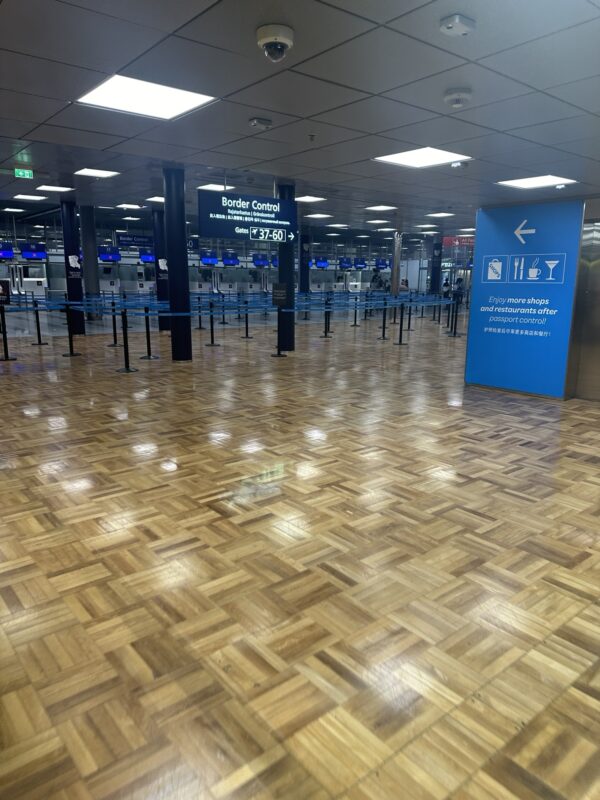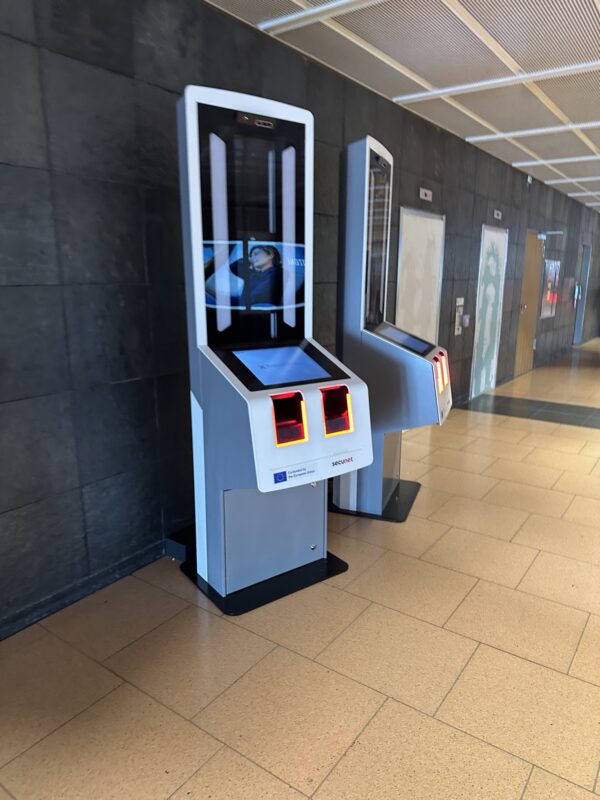For those travelling to Europe from a non-EU country, there’s more news dropping about the Entry/Exit System (EES) and European Travel Information and Authorisation System (ETIAS).
Entry/Exit System (EES)
For those waiting for EES to start, it will start going live on the 12th October. The EES is an automated system for registering non-EU nationals travelling for a short stay, each time they cross the external borders of 29 European countries.
The European Union will be deploying it in a phased approach. During this time, different parts of the system, such as collecting biometric data (facial image and fingerprints), will be implemented by the European countries using EES step by step. This means that travellers’ biometric data (facial image and fingerprints) might not be collected, and their personal information may not be registered in the system.
Passports will continue to be stamped as usual during this time
This phased implementation will last until 9th April 2026. From 10th April 2026, the EES will be fully operational at all external border crossings of the European countries using the system.
EES information can be found at https://travel-europe.europa.eu/ees.
European Travel Information and Authorisation System (ETIAS)
ETIAS will start operations in the last quarter of 2026. At the time of writing, no specific date has been announced.
The ETIAS Regulation, adopted in 2018, had established a fee of €7. Taking into account the rise in inflation since 2018 and additional operational costs related to implementation (such as new technical features), the fee will be adjusted to €20 per application, valid for a period of three years.
It will also bring the cost for a travel authorisation to the EU in line with similar travel authorisation programmes such as the UK Electronic Travel Authorisation (ETA) and the US Electronic System for Travel Authorization (ESTA).
The adjustment of the fee will now undergo the two-month review period of the Council and the European Parliament (renewable once). It will enter into effect as soon as ETIAS is operational, which is expected for the last quarter of 2026. Applicants who are under 18 or over 70 years of age at the time of application are exempt from this fee. Also exempt are family members of EU citizens and family members of non-EU nationals who have the right to move freely throughout the European Union.
ETIAS information can be found at https://travel-europe.europa.eu/etias.
In Quotes
Kaare Dybvad Bek, Minister for Immigration and Integration, said:
Strong protection of our external borders is vital for the European Union. The new Entry-Exit system will help us ensuring that non-EU nationals travelling to Europe comply with our rules. That will make our borders safer and border checks more efficient.
Not entirely unexpected
With dates finally crystallised, the EES and ETIAS schemes are finally approaching implementation after years of discussion. Whilst the rise in the ETAIS fee is… annoying at best, it’s to be expected (given the UK increased its fee, and the US… who knows what they’re considering these days).
For travellers, keep an eye out if you’re travelling into the EU from the 12th October 2025 – as you’ll need to register your biometric and personal data when instructed as you approach the border.
Kiosks have been going up for some time – I spotted more than a few in Hamburg recently.
They’ll have their time to collect information soon.
Welcome to Economy Class and Beyond. Your no-nonsense guide to network news, honest reviews, in-depth coverage, unique research, as well as the humour and madness I only know how to deliver.
Our Social Media pool has expanded. You can find us across most networks as @economybeyond on BlueSky, Threads, Mastodon and Instagram!
Also, remember that we are part of the BoardingArea community, bringing you the latest frequent flyer news from around the world.


I have an Italian Passport and I am over 70. My wife is also over 70 and only has an American passport. We are headed to Paris from October 9 to October 17. Do we both need to register for the ETIAS and pay.
As ETIAS is not due to start till next year, no. Happy travels.
Thank-you!!